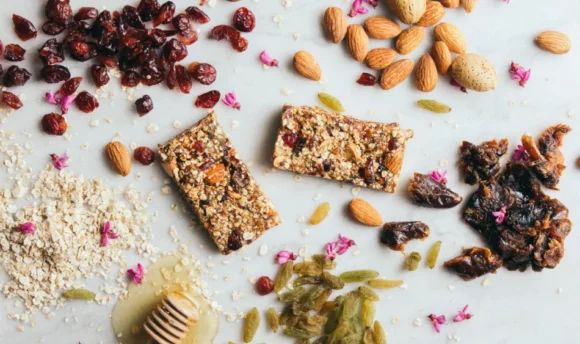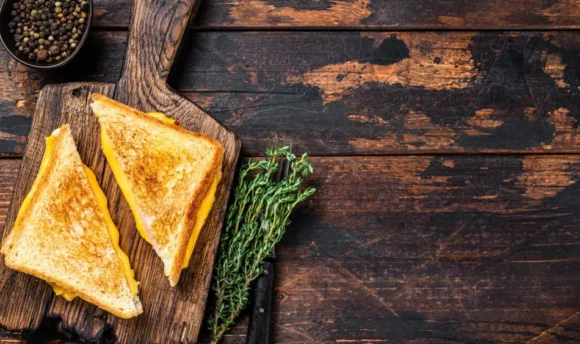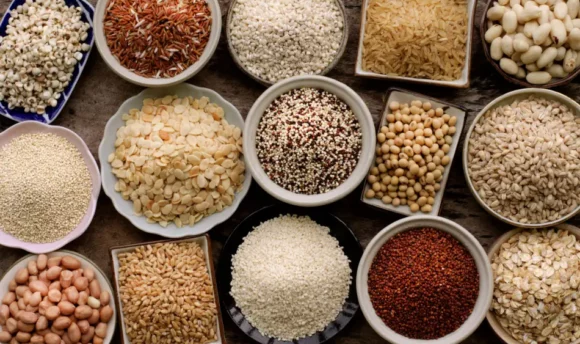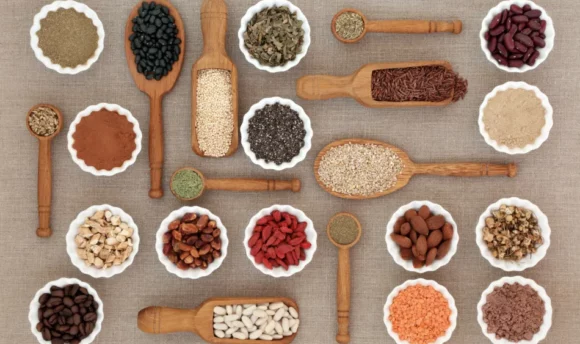Ravioli 101: Is It Healthy Pasta?
Ravioli is a popular Italian pasta dish that comprises a cheese filling wrapped in pasta dough. The filling choices are endless, but is it actually healthy? This article explores whether the popular classic dish is a nutritious choice and can help you lose weight or stay in shape.
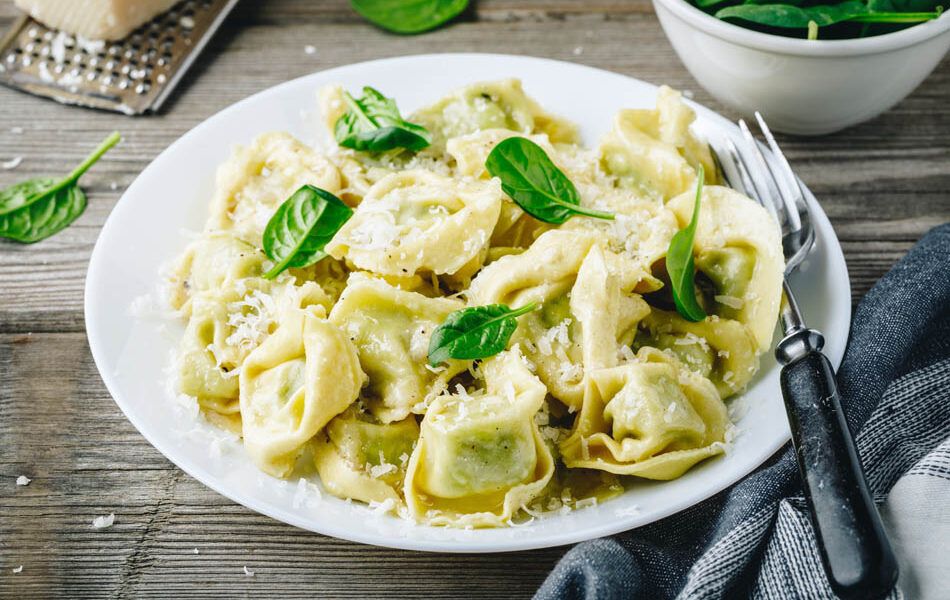
Ravioli is an interesting pasta that makes a convenient dinner option. Most branded versions require you to boil the pasta or fry it with certain vegetables.
Eating ravioli may quickly put you on the high side of your daily calorie allowance, as it contains saturated fat and cholesterol. Although you can order ravioli at Italian restaurants, you can also make it at home.
Ravioli is irresistibly delicious, but is it healthy? How many calories are in ravioli? Read on for a nutritional analysis of the stuffed pasta delicacy and whether it fits into a balanced diet.
What Is Ravioli?
Ravioli is an Italian dish consisting of small pockets of pasta filled with a variety of cheeses, meats, and vegetables, usually served with tomato sauce. It is made from durum wheat flour, a rich source of complex carbohydrates, vitamins, and minerals.
The pasta sheet is made of flour-egg dough that is rolled out and flattened into thin sheets. This creates pasta pockets that give ravioli its unique appearance. Ravioli is often served with tomato sauce or cream sauce in restaurants, depending on whether you have it as a main meal. Most forms of ravioli come in circular or rectangular shapes. The bigger the pasta, the more fillings you can add when making it at home. Some people like to use chicken, ricotta, pork, butternut squash, salami, sweet potato, and smoked salmon when making the filling.
Is Ravioli Healthy?
Yes, ravioli can be a healthy type of pasta dish because it provides nutrients such as carbohydrates, protein, essential vitamins, and minerals. However, the type of ravioli and the stuffing can also determine how many calories the dish has in one serving.
Ravioli is only healthy when you stuff it with green vegetables and lean protein sources. But with some stuffing, such as red meat, cheddar, parmesan cheese, and bacon, the calories add up. The same goes for sauces that come with ravioli, like butter, tomato, cheese, or meat sauce.
Canned ravioli is often high in saturated fat, calories, and sodium, making it unsuitable for those trying to eat fewer calories and lose weight. A study found that eating too much fat can increase the risk of heart disease and cause blood pressure spikes in those with hypertension.
You can make healthy ravioli at home using nutrient-dense fillings, with some great options being mushrooms and butternut squash. For those wanting to drop a few pounds, consider stuffing the pasta with nutritional fish like sea bass to consume more protein and vitamin A.
There are restaurant versions of ravioli that can also be unhealthy. Processed sauces contain preservatives, fats, sugar, and refined carbs. If you want to eat these unique pasta pockets on your diet, request ravioli without a sauce or make your own to lower the calorie content.
3 Health Benefits of Ravioli
There are some benefits to eating plain or cheese ravioli. Many of the ingredients contain important vitamins and minerals for your overall health. Although this pasta might have advantages, you should stick to homemade dishes to improve your diet even more.
Here are 3 health benefits of eating ravioli:
#1 Beneficial for muscle growth and repair
Ravioli stuffed with beef is an excellent source of high-quality protein that the body requires for muscle regeneration. Protein provides essential amino acids that are vital for muscle growth and repair, making it a suitable choice for those who enjoy strength and weight training.
Strong muscle mass helps with weight loss because muscles naturally burn calories at rest and increase the body’s metabolism. Protein can also promote healthy skin, hair, and nails while helping the body make important enzymes and hormones needed for normal bodily functions.
Ravioli is also a good source of vitamin B6, which is required for energy production.
#2 Keeps the digestive system healthy
Ravioli is made from durum wheat flour. This product contains a good amount of dietary fiber that boosts digestive health. Fiber lowers the risk of constipation and helps you have regular bowel movements.
Regular consumption of dietary fiber is seen to be protective against colon cancer because it reduces the time the stool stays in the gut and decreases the body’s integration with toxins that can trigger cancerous cells.
Durum wheat flour also contains magnesium and iron. These minerals are known to support digestion by feeding the healthy bacteria in your gut.
Moreover, it is often served with sauces made from tomatoes which contain a powerful antioxidant known as lycopene, which reduces cancer risk.
#3 Maintains healthy bones and teeth
Ravioli is healthy because it contains a variety of cheese fillings with an impressive calcium content. Calcium is a vital nutrient for the development of strong bones and teeth. Another benefit of this nutrient is that it helps maintain muscle strength and heart rhythm.
Cheddar cheese in ravioli also contains plenty of vitamin K. This vitamin increases bone mineral density and slows down bone degeneration in older people.
You can eat ravioli with a smile because it is delicious and good for your teeth. Plus, a diet consisting of foods rich in calcium reduces the risk of osteoporosis.
3 Downsides of Ravioli
This Italian cuisine may not be a healthy choice for everyone. It’s important to remember that store-bought ravioli contains fattening ingredients and preservatives. Learning more about this popular dish can help you decide whether it’s suitable enough for your current diet.
Below are some disadvantages of eating ravioli:
#1 Has too many calories
Ravioli can be healthy, but often, the cheese ravioli fillings contain too many calories that promote weight gain. Buy branded ravioli, and you might eat half of your day’s allotted calories.
Consuming foods with a high-calorie count will make it difficult to lose weight since you need to be in a caloric deficit to burn fat.
#2 Unsuitable for heart health
Cheese ravioli is high in sodium and contains bad fat. Eating excess sodium in your diet interferes with the electrolyte balance and can cause bloating and high blood pressure.
Ravioli with meat fillings are also loaded with calories, saturated fat, and high cholesterol, which increases the risk of heart disease. Fat boosts inflammation and contributes to a range of long-term health problems.
#3 Contains too much sugar
Branded ravioli is especially high in added sugar. When you consume too much sugar, the body stores any excess in the body in the form of fat. People looking to lose stubborn weight may notice slow results if they eat this pasta dish.
Consuming sugar can cause spikes in blood sugar levels and encourage insulin resistance, leading to type 2 diabetes. Sugar also increases inflammation in the body, which is a precursor to cardiovascular disease, diabetes, and cancer.
Nutrition Facts of Ravioli
Some people forget to read the labels on packets of cheese ravioli. This is important if you want to stay healthy or maintain a calorie deficit.
The table below breaks down the nutritional facts of canned cheese ravioli.
Nutritional value per 100g
| Calories/ Nutrients (per 100g) | Amount |
| Calories (kcal) | 77 |
| Net carbs (g) | 12.3 |
| Fiber (g) | 1.3 |
| Sugar (g) | 3.72 |
| Fats (total) | 1.45 |
| Protein (g) | 2.48 |
| Cholesterol (mg) | 3 |
Source: https://fdc.nal.usda.gov/fdc-app.html#/food-details/173328/nutrients
Low in calories
Cheese ravioli can be low in calories if you only consume 100g. However, this isn’t much since 100g would equal 5–10 pasta pockets. The type of filling will also dictate how many calories you consume, so always be aware of your portions if you don’t want to gain weight.
Low in fats
Ravioli on its own without meat sauce or filling is low in saturated fats. Cheese ravioli can be a safe option if you stay below 100g. Just remember that branded versions and main meals in restaurants can have added fillings that stack up the amount of unhealthy fats.
High in carbs and sugars
Most types of ravioli are rich in carbohydrates and sugar. A 100g serving of cheese ravioli contains 12.3g of carbs and 3.72g of sugars. Eating too many carbs makes it harder for the body to burn calories, especially if you’re trying to reduce face, thigh, and belly fat.
Ravioli vs. Tortellini
Here is a comparison between ravioli and tortellini:
| Ravioli | Tortellini | |
| Origin | Italy | Italy |
| Shape | Square-shaped stuffed pasta | Ring-shaped stuffed pasta |
| Filling | Does not necessarily have a meat filling but often includes meat, cheese, seafood, and vegetables | Typically has a meat filling |
| Serving | Traditionally served in a rich meat broth with tomato sauce, butter, or cheese | Traditionally served in capon broth |
| Calories per 100g | 77 | 307 |
| Protein per 100g | 2.48 | 13.5 |
| Total fats per 100g | 1.45 | 7.23 |
| Net carbs per 100g | 12.3 | 45.1 |
| Sodium per 100g | 306mg | 406mg |
| Cholesterol per 100g | 3mg | 42mg |
Source: Ravioli, Tortellini
Healthy Ravioli Recipe
Ravioli makes a great base for marinated artichokes and a creamy lemon sauce. This delicious recipe ensures there are no preservatives, added sugars, and unnecessary ingredients.
Here are the ingredients and directions for this recipe:
Ingredients
- 1/14oz jar artichoke, drained, reserving 1 tbsp oil
- 1 large leek, finely sliced
- 1 garlic clove, minced
- 3 tbsp cream cheese
- ½ cup fresh basil leaves
- Juice and zest of 1 lemon
- 1/8.8oz pack spinach and ricotta ravioli
- Parmesan cheese to serve (optional)
Directions
- In a large saucepan, heat the artichoke oil. Add the garlic and leek, then fry for 5 minutes over medium heat or until the leek softens.
- Add the artichokes, cream cheese, basil, and lemon zest and stir. Season with salt and pepper to taste, and finish with a squeeze of lemon juice.
- Meanwhile, cook the ravioli according to the package directions. Drain, then toss with the artichokes and cream cheese in the pan.
- Garnish with grated parmesan, if desired.
For more delicious and healthy recipes like this one, we recommend checking out Keto Cycle, an app designed to help you get started on the keto diet. It contains personalized and easy-to-use programs with over 10,000 healthy keto recipes to help you stick with the diet.
FAQs
Ravioli may cause weight gain if the filling has many calories, fats, and sugar. It can be healthy when prepared with veggies and lean protein like tuna and roast beef. Choose homemade ravioli over canned ravioli, which has more calories and is often high in sodium and fats.
Eating ravioli regularly is not good for weight loss because the dish contains many calories that can make it hard to lose weight. You can eat ravioli in moderation and use healthy fillings. Some low-calorie ingredients comprise haddock, olives, spinach, cottage cheese, and halibut.
A Word From a Nutritionist
Ravioli is a popular Italian treat made with various cheese fillings. Every serving of ravioli provides the body with essential nutrients such as complex carbs, high-quality protein, and fatty acids. It also contains minerals like calcium, which supports strong bones and teeth.
The downside of cheese ravioli is that it may contain added sugar, sodium, and saturated fat, depending on the type of filling you choose. This is something to be aware of if you’re trying to lose weight or build a balanced diet.
For those who want to drop a few pounds, consume ravioli in moderation and choose healthy fillings such as vegetables to increase your intake of dietary fiber. Also, consider making ravioli at home to control the type of ingredients you use.
Conclusion
Ravioli is a diverse type of pasta that you can have with any filling. Many pasta dishes contain essential vitamins such as vitamin B and minerals like calcium. It is often served with a rich sauce such as crème or tomato sauce.
Most people believe ravioli is unhealthy because it is high in fat, calories, sodium, and added sugar. But it depends on the type of filling and whether it is canned or homemade.
Ravioli can be healthy if you eat it with vegetable fillings. Some great examples include butternut squash and broccoli. Just make sure you use healthy oils like canola or olive when making the dish.





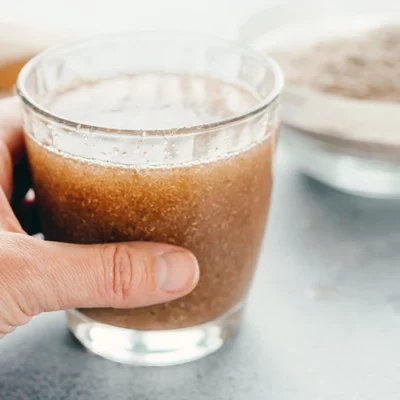







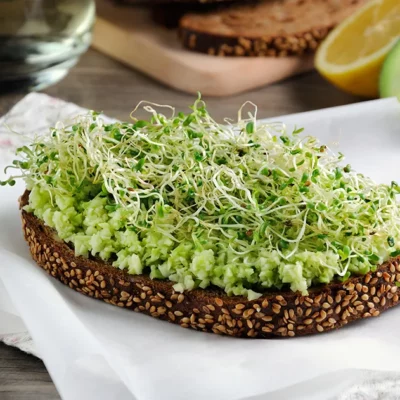




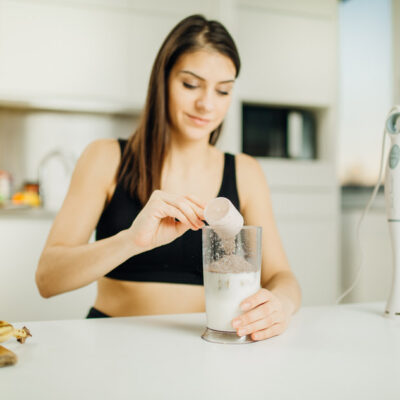
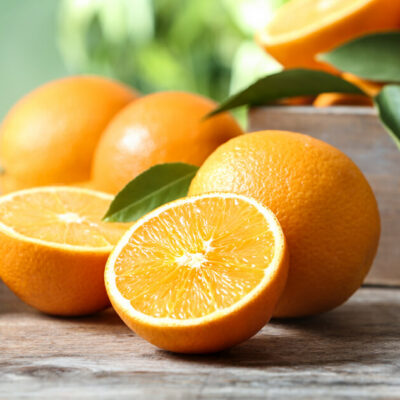
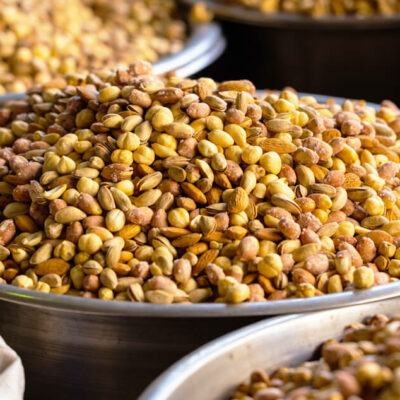

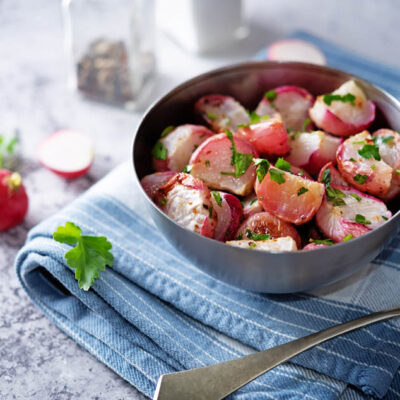
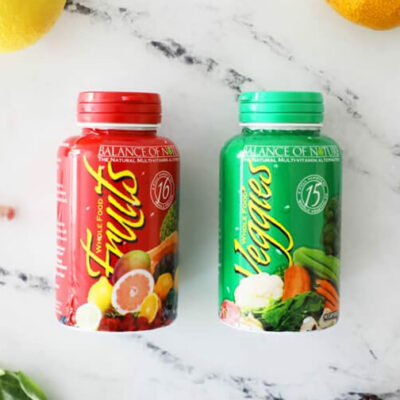

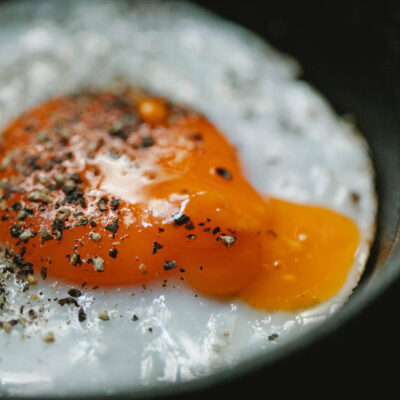
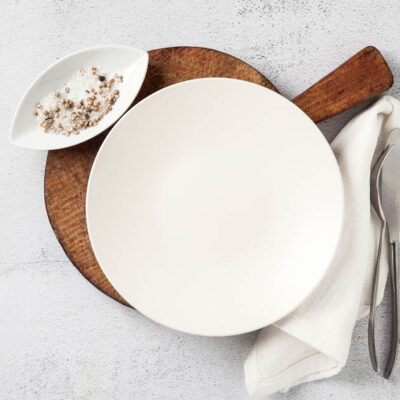
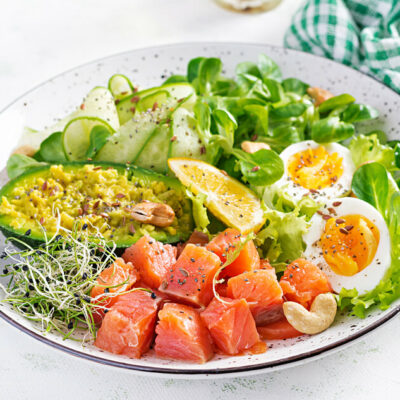
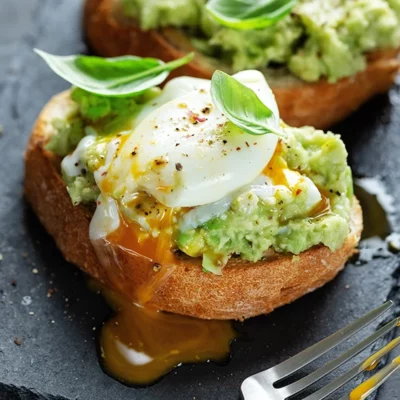





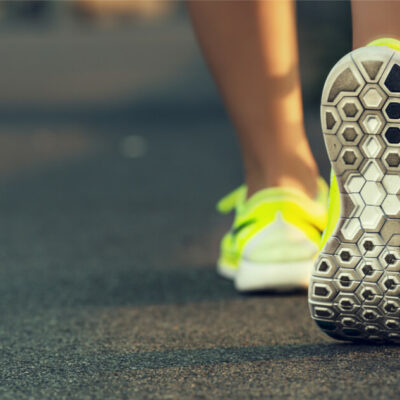














 Select your language:
Select your language: 




